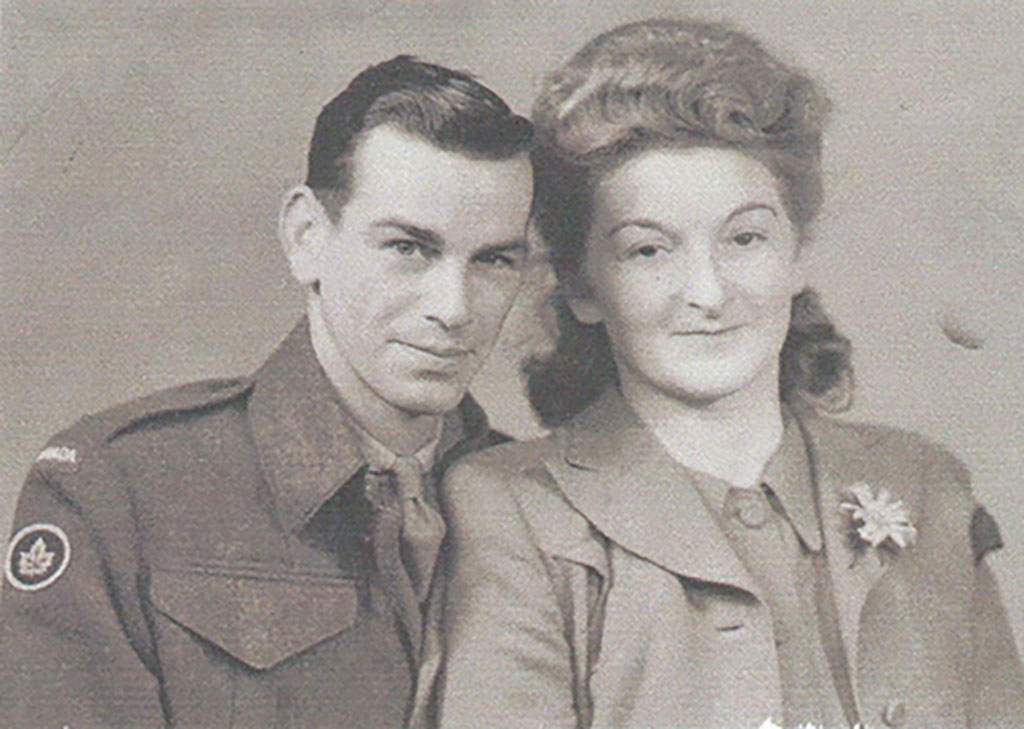Change. For some people, change is exciting, for others, terrifying. In June, the Museum changed, the visitor experience changed and the reactions of visitors to our Museum changed. I love change, by the way – especially this kind.
Pier Perspectives Blog
-
How do YOU like our Museum?
-
Three Halloweens with the Unforgettable Kay Collicott

Ralph and Kay (McAndrew) Collicott Joanne Collicott Mc G
-
Customs and the Seizure of Goods at Pier 21
Canadian customs officers at Pier 21 sought to prevent the spread of foot and mouth disease by examining immigrants’ baggage and personal items for contraband items. This included plants, soils, seeds, and meats, while liquor and tobacco were dutiable items. Some immigrants hoped that by answering ‘no’ to a customs official’s query they could treat their families and friends with a sample of the taste of home. In most cases, items were found and seized.
-
"Might Be the Best of the Lot": Baltic Refugees, Canadian Immigration Policy and the Arrival of SS Walnut
Canadian immigration officials consider many factors when determining whether an individual is admissible for entry to Canada. In December 1948, the arrival of SS Walnut from Sweden illustrated that admitting and processing newcomers to Canada was influenced by several factors, including the Immigration Act, regulations and procedures, but also the local discretion of immigration officials, and public opinion. SS Walnut’s passengers helped to alter Canadian immigration policy and how Canadian officials processed new arrivals.
-
Hooks for History: Using a Building Model to Introduce Complex Pasts
Pier 21’s exhibition contains a model of the site. In that model, we find tiny details that offer links to substantial and significant histories. -
Port of Entry, Process and Gatekeepers – A History of Immigration at the Port of Quebec during the Great Depression
In the early twentieth century, politicians, business leaders, immigration officials, and European immigrants were instrumental in shaping the Port of Quebec’s facilities, and increasing the flow of passenger traffic at this major Canadian shipping and transportation hub. During the Great Depression, the port was used as a socioeconomic gatekeeper: deporting unemployed immigrants deemed as ‘public charges,’ and denying entry to immigrants without sufficient financial means to support themselves during a period of global instability.
-
My Immigration Journey
One of my favorite questions to ask visitors here at the museum is “what made you leave your home and decide to come to Canada?” Some respond that it is for new opportunities, to improve their living conditions, to flee war, for better jobs, safety, adventure and love. My story is not unlike theirs. It all began when I decided to marry someone from my hometown, someone I’d known since I was five years old. After I made the decision, I told my family that I would be leaving home. My mother looked at me - she was in tears. -
Major Waves of Immigration through Pier 21: War Brides and Their Children
-
An Unexpected Treasure
Just the other day, to my surprise, I learned that I have been wearing a treasure every time I do my gardening.
My father came to Canada from France in the 70s for adventure and new opportunities. The eldest of three brothers, he was the first to leave home. My father tells me that my grandmother, in typical mother fashion, was very nervous for him. She imagined Canada as a snowy abyss, where her poor son would be alone and shivering. As a final present to him before his journey, she gave him a sweatshirt. It was not just any sweatshirt, but a glorious velour blue and red shirt with yellow piping. A classic, really.
Pagination
- Previous page
- Page 7
- Next page